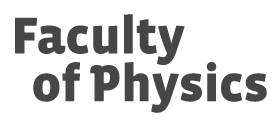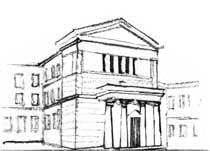String Theory Journal Club
2015/2016 | 2016/2017 | 2017/2018 | 2018/2019 | 2019/2020 | 2020/2021 | 2021/2022 | 2022/2023 | 2023/2024 | 2024/2025
2025-11-25 (Tuesday)
Tommaso Pedroni (SISSA)
Blowing-up the edge: connection formulae and stability chart of the Lame equation
Connections between different areas of physics often provide new perspectives on difficult problems and suggest guiding principles for their solutions. In this work, we show how the correspondence between 4d N=2 supersymmetric gauge theories, 2d conformal field theories and quantum integrable systems can be used to study periodic spectral problems, with a particular focus on the Lame equation. After introducing the key ingredients, we use 2d CFT techniques to solve the connection problem of the Lam e equation in terms of semiclassical Virasoro blocks. We then analyze their analytic structure, showing how apparent poles turn into branch points through a partial resummation that combines the AGT correspondence – relating 2d conformal blocks to 4d Nekrasov partition functions – with a specific limit of the C^2 blow-up equa-tions satisfied by these functions. Finally, we apply these results to the study of the periodic spectral problems of the Lam ́e equation, highlighting the new insights gained from this perspective.
2025-11-18 (Tuesday)
David Osten (University of Wrocław)
An integrable sector for the membrane
In contrast to string sigma models which are well-known to be (classically) integrable in certain backgrounds, most famously flat space or AdS(5) x S(5), the same is not true for the membrane sigma model. Reasons for this are the non-trivial gravity on the world-volume but also the rarity of three-dimensional integrable field theories in general. Here, I will present the novel observation that a certain decoupling limit of the membrane in certain backgrounds will lead to an integrable model, the Manakov-Zakharov-Ward model – a known three-dimensional, but non-relativistic, integrable field theory. As an example of a supergravity background in which this limit is possible I present the 11d uplift of the pure NS-NS AdS(3) x S(3) x T(4) background.







